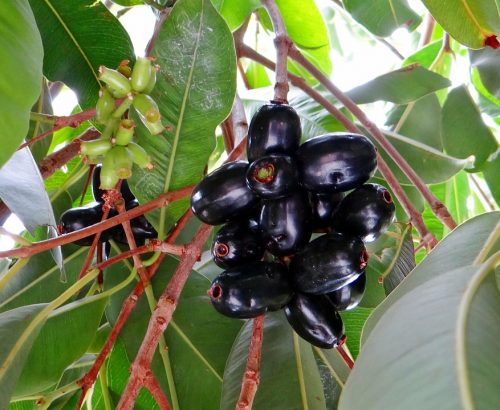IIT Roorkee Scientists Are Using Jamuns to Make Cheap Solar Cells. We’re Not Kidding!
With the Indian government having pledged to invest more in solar energy, jamuns could potentially hold the answer.

To anyone with a sweet tooth, Jamun is a delicious fruit that one can munch on endlessly. But to the researchers at the Indian Institute of Technology, Roorkee, it could be the key to tapping solar power more effectively.
Yes, researchers at the esteemed institute are looking to get some help from the fruit to make cheap but effective solar cells, and we are not joking about this.

Image for representation. Photo source
Turns out the pigmentation that appears in jamuns can easily be used as cheap photosensitisers in Dye Sensitised Solar Cells, according to scientists. Lead researcher Soumitra Satapathi, assistant professor at IIT Roorkee, has been quoted by Livemint as saying, ““The dark colour of jamun and abundance of jamun trees in IIT campus clicked the idea that it might be useful as a dye in the typical Dye Sensitised Solar Cells (DSSC).”
Researchers and scientists have been dedicated to finding renewable and alternate sources of energy to not only combat global warming but also wean away from the human dependence on fossil fuels, which are fast depleting. Solar energy is generally considered a vast resource to that end. However, tapping into solar power is still more expensive than conventional energy sources at present. Researchers across the world are working on various innovative new solutions that make the manufacturing of solar panels and maintenance of them cheaper than ever before.
One of them could be the solution proposed by IIT Roorkee. The reason solar panels made from jamuns will be less expensive is due to the fact natural pigments such as the ones occurring in jamuns are far more inexpensive that Ruthenium-based pigments that are generally used. While extracting the dye from jamuns, scientists also threw in other fruits like fresh plums and black currant that contain similar pigmentation and then centrifuged and decanted that mixture.
You may also like: Want to Install Solar Panels in Your Home or Office? ISRO’s New App Will Help You Do That!
In 2015, Prime Minister Narendra Modi along with French President François Hollande unveiled a new global solar alliance comprising of 120 countries at the Paris COP21 climate summit. The Indian government pledged to take the lead in investing a lot more in solar energy moving forward. And it can possibly achieve that with some unlikely help from jamuns.
Like this story? Or have something to share? Write to us: [email protected], or connect with us on Facebook and Twitter.
NEW: Click here to get positive news on WhatsApp!
This story made me
- 97
- 121
- 89
- 167
Tell Us More
We bring stories straight from the heart of India, to inspire millions and create a wave of impact. Our positive movement is growing bigger everyday, and we would love for you to join it.
Please contribute whatever you can, every little penny helps our team in bringing you more stories that support dreams and spread hope.


















